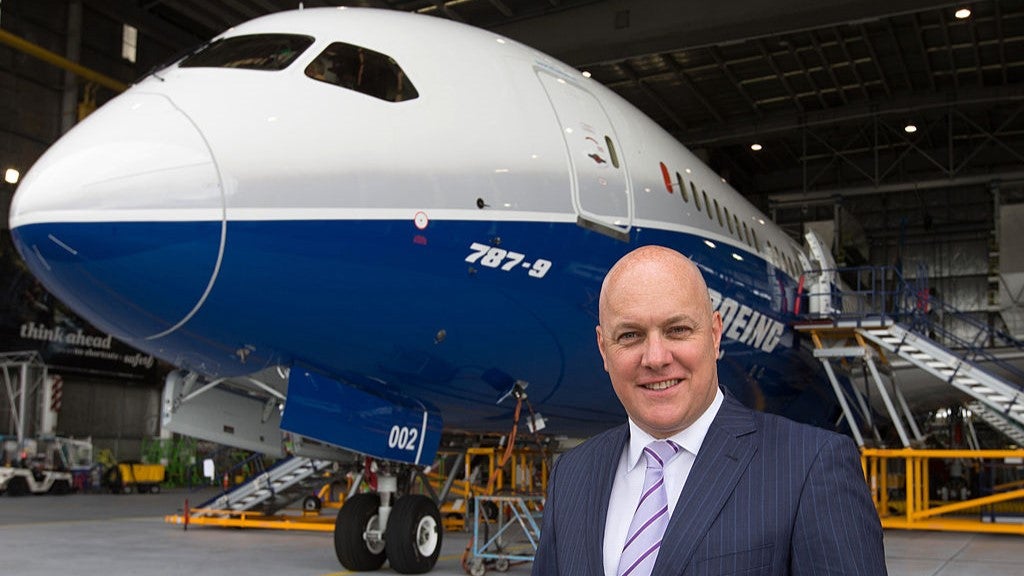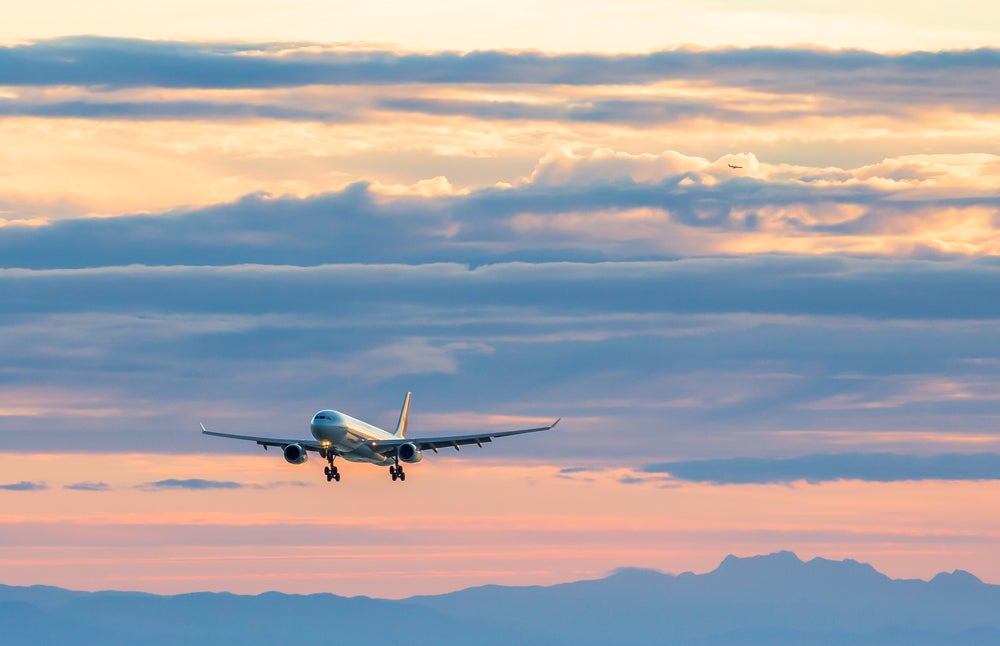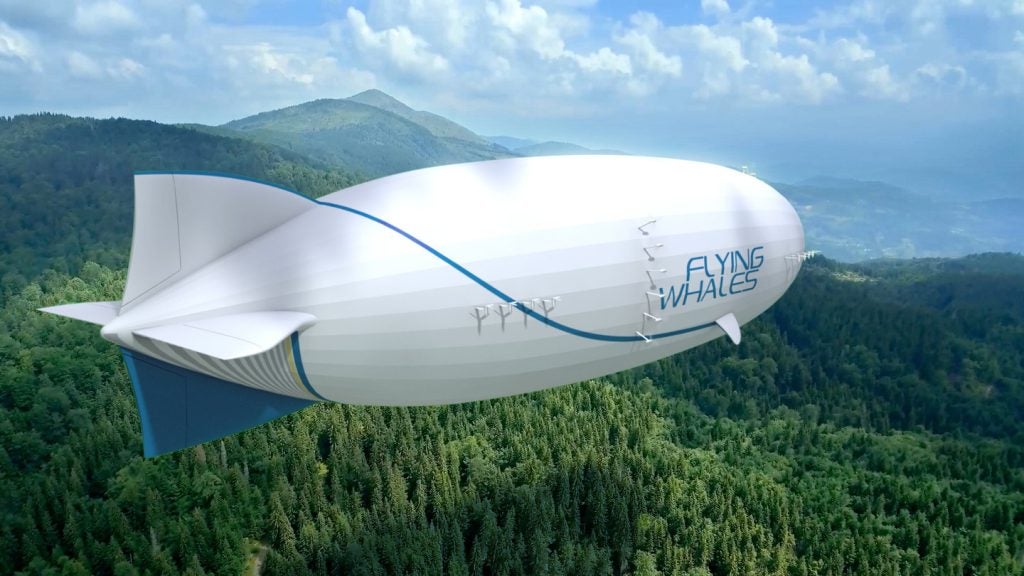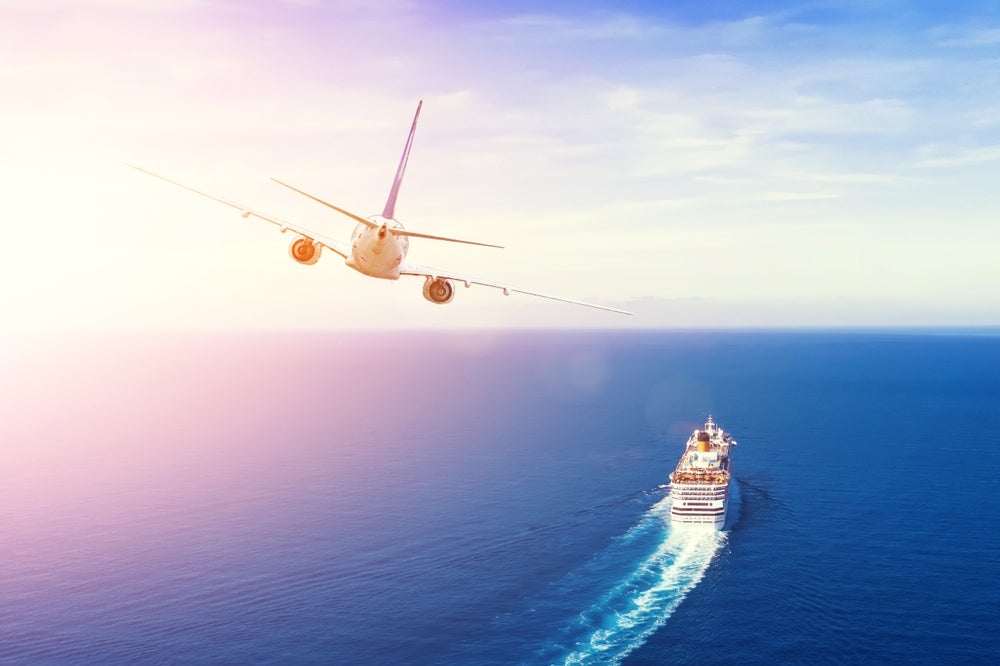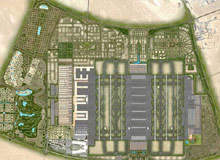
More than an airport, Dubai World Central (DWC) – with the Al-Maktoum Airport as centrepiece – is to be the world’s first truly integrated multi-modal logistics hub connecting road, sea, air and rail, according to developer Dubai Airports. Costing an estimated $33bn, it will become the world’s largest passenger and cargo hub and is expected to surpass the world’s busiest airports.
At a global crossroads between Europe, Asia, Africa and the Asia-Pacific, 140km² DWC is tipped to be the world’s biggest passenger and cargo hub, catering for 120 million passengers and 12 million tons of cargo every year.
Some 9,000 workers have begun creating the complex out of the surrounding desert, on a site adjacent to the current Jebel Ali Port, 40km south of Dubai city. Al-Maktoum International Airport at its heart is set to be the size of Chicago’s O’Hare and London’s Heathrow Airports combined.
THE DWC CONCEPT
A DWC plan was soft-launched at the 2005 aerospace exhibition in Dubai, and first showcased in depth at the Arabian Travel Market in 2006.
See Also:
The development itself will comprise six clustered zones: Al-Maktoum International Airport, Dubai Logistics City, DWC Commercial City, DWC Residential City, DWC Aviation City and DWC Golf City. About 900,000 people are expected to live there eventually.
How well do you really know your competitors?
Access the most comprehensive Company Profiles on the market, powered by GlobalData. Save hours of research. Gain competitive edge.

Thank you!
Your download email will arrive shortly
Not ready to buy yet? Download a free sample
We are confident about the unique quality of our Company Profiles. However, we want you to make the most beneficial decision for your business, so we offer a free sample that you can download by submitting the below form
By GlobalDataDubai Airports senior communications officer Ali Zaigham says DWC aims to support aviation, tourism and logistics needs for Dubai emirate until 2050. Total infrastructure costs are calculated at $33bn.
Al-Maktoum will have three passenger terminals. “One each for Emirates, other mixed carriers and low-cost carriers,” Zaigham said. “It will be the world’s largest passenger and cargo hub – ten times the size of [pre-existing and complementary Dubai passenger and cargo facilities] Dubai International Airport and Dubai Cargo Village combined.”
To put the DWC project into perspective, Memphis, in US state of Tennessee, is the largest cargo hub currently but handles less than one-third of DWC’s projected 12 million tons capacity. Atlanta, also in the US, is today the world’s busiest passenger airport – but DWC will handle 120 million passengers a year – nearly twice Atlanta’s maximum.
Passengers and cargo in transit will be served by 100,000 car-parking spaces, six concourses and 16 cargo terminals as well as what Dubai Airports says will be the world’s largest executive jet centre, capable of handing 100,000 aircraft movements annually. None of that is to mention the additional royal jet centres, hotels and shopping malls, support and maintenance facilities. And of course, a new design allows for the latest in technologies and capabilities to be incorporated.
“[Al-Maktoum] will be designed to handle all next-generation aircraft, including the A380. Up to four aircraft will be able to land or take off simultaneously,” Zaigham says. “Dubai International Airport and Dubai World Central will be linked by a high-speed express rail system – the under-construction Purple Line.”
Al-Maktoum will also be served by the Dubai Metro and a dedicated DWC light railway and be the region’s only hub for A, B and C-level checks on all aircraft, up to A380 specifications.
The complex is adjacent to the Jebel Ali Port and Free Zone and will run 24 hours a day, making air to sea connectivity achievable in less than four hours, which, according to Zaigham, is a record turnaround time.
SERVING GROWTH
Dubai ruler Sheikh Mohammed bin Rashid Al Maktoum has emphasised the aviation and logistics sectors as crucial in the economic development of Dubai. DWC is aimed at supporting Dubai’s rapid economic growth. Once dependent on oil wealth, Dubai is increasingly diversifying into areas such as tourism, construction, finance and logistics, backed by a secure, freely convertible currency, competitive labour costs, low taxes and multiple double-taxation and bilateral investment treaties, and it
seems to be working.
“Dubai International Airport has been growing at an average 15% annually since 2000, and we expect the growth rate to pick up pace over the coming years,” Dubai Department of Civil Aviation president and CEO of Emirates Group, Sheikh Ahmed bin Saeed Al Maktoum, says.
International trade as a whole in Dubai has grown an average 11% each year since 1988.
Dubai’s other airport – connected to 202 destinations via 118 international airlines – is expected to eventually handle 75 million passengers a year, but the emirate continues to grow and has positioned itself as the most preferred business and leisure destination in the region, according to Ahmed.
The aim is now to transform Dubai from the aviation centre of the Middle East to the world’s aviation hub. “This journey has already begun in the form of projects in aviation and aerospace sectors, phased investments in which will reach $82bn over the next decade,” Ahmed says.
LAYING THE GROUNDWORK FOR FLIGHT
Local builder Al Naboodah Contracting was awarded the AED1bn contract to construct the airport’s first CAT III A380-enabled 4.5km runway. It was finished in November 2007 and has entered a period of testing before the first scheduled cargo flights take off in mid-2008.
Six parallel 4.5km A380-enabled CAT-III runways and six concourses are planned, with a 92m-high air traffic control tower that Dubai authorities have claimed will represent a Middle East aviation landmark. Runways will be at least 800m apart. Reports have claimed it will be the only airport in the world to feature six such parallel runways.
Further contracts are set to be awarded at the time of writing for ICT systems, water, power, runways and aprons.
United Arab Emirates (UAE)-Germany joint venture Arabtec / Max Bogl is creating an AED100 million-passenger terminal for low-cost, regional and charter airlines. Arabtec / Max Bogl also put its hand up for the AED278m cargo terminal and an AED143m control tower and navigation building.
Another UAE-Germany partnership, Thermo / Amak, has won an AED108m fuel farms project, while the UK’s Park Air Systems and France’s Thales are sharing an AED120m navigational aids package.
Dubai Logistics City has awarded an AED1.5bn contract to build its headquarters and office park buildings.
Work on emergency and security service buildings and the first passenger and cargo terminal, along with installation of the navigational aids systems, is progressing.
According to Zaigham, the first passenger terminal was nearly half complete in January 2008. “It will serve seven million passengers per annum.” The first cargo terminal is over half completed and the AED908m apron and associated taxiways project more than 75% finished.
DWC at the time of writing was awarding tender contracts for finishes at the passenger terminal, cargo terminal, specialised warehouses, cabling works and fencing for Al-Maktoum International Airport.
Meanwhile, Dubai-based Trident Transport Company has completed three phases of grading work for DWC. Some 72 million cubic metres of earth across some 62km² of land has been graded since January 2005. Laying the foundation for an airport project that will surely go down in the Guinness Book of Records due to sheer size and capacity.



